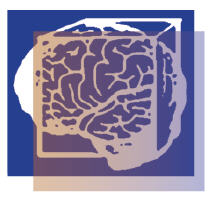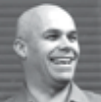By Marco C. Janssen, UTInnovation, the Netherlands
Given the results so far of the focus on creating an innovation culture within utilities, I think that there is a better way to drive innovation by focusing on the structural building blocks of innovation before addressing culture.

Innovation is a buzz word nowadays and everyone is talking about disruption, transformation, re-invention and the likes. The power industry however is not particularly known for innovation, however with the change in customer demands, sustainability and climate concerns, and the role of data and analytics powerful incentives have arisen for the industry to focus on innovation to develop completely new business models that alter how companies do business and create commercial value.
Furthermore, I think that with the rapid change in technology and the enhanced capabilities that are offered to us, we indeed need to develop a vision on how to use such new options and how to transform our business. This is however challenging, particularly in the power industry, with a long history, large investments in assets, and with services that are critical to people’s lives.
Innovation is a synonym to change, and with an industry that is set in its ways for many years, change must be pursued carefully and systematically because innovating in one area may have undesirable impacts in another.
While there is much use of the term “disruption” in the industry, not all innovation activities need to be transformational and disruptive. Innovation can focus on incremental improvements such as productivity and efficiency gains required to sustain the business.
Innovative ideas also don’t need to all be original and come from R&D centers; innovative ideas can come from anywhere. People with experience who have a capacity to spot patterns and reflect can spawn ideas for improvement. Fresh ideas can also be adopted from other industries that look at problems differently, specifically from those industries that have experience in driving innovation processes in long-standing business.
One critical area for innovation is answering the question of how to create innovation within the business, and we have seen many debates on how to drive innovation in the power industry. A lot has been linked to Peter Drucker’s words “culture eats strategy for breakfast” which has tempted many to place an overabundance of focus on behavior and culture. Similarly, “building a culture of innovation” is a theme that dominates discussions in boardrooms and at conferences.
However, given the results so far of the focus on creating an innovation culture within utilities, I think that there is a better way to drive innovation by focusing on the structural building blocks of innovation before addressing culture. These structural components include the processes through which innovation projects are selected, how organizations are designed to have the necessary communication and coordination regarding change, and what incentives drive actions and avoid unwanted practices.
Such a structure strikes a balance between short-term results and longer-term outcomes, and between centralizing versus decentralizing innovation activities. It also governs the allocations of capital, affects the alignment of investors and regulators, and shapes the mobilization of the organization through the stages of innovation, from ideation, to scaling, and adoption within the core business.
Please note that addressing structure first is not to say that culture does not matter, but for me it is structure that is more important at the onset of implementing innovation. Long-standing cultures do not change easily, particularly when the legacy business continues to run and, in most cases, funds the innovation efforts. Without addressing tangible matters of structure, the dominant long-standing culture that the business needs for present survival will overpower any push to change.
In contrast, I have seen that companies that have focused on hard structural elements to drive innovation have been more successful and over time have instituted new behaviors, norms, and practices that eventually led to cultural change in their organization
Biography:

Marco C. Janssen is the CEO of UTInnovation LLC and the former Director of the Smart Grid PMO at the Dubai Electricity and Water Authority. He received his BSc degree in Electrical Engineering from the Polytechnic in Arnhem, Netherlands and has worked for over 27 years in the field of Smart Grid, Protection, Control, Monitoring, Advanced Metering Infrastructures, Distribution and Substation Automation. He was a member of IEC TC57 WG 10, 17, 18, 19, the IEEE PES PSRC and CIGRE B5 and D2 WGs. He was the convenor of D2.35 and editor of the Quality Assurance Program for the Testing Subcommittee of the UCA International Users Group. He holds one patent, has authored more than 58 papers, is co-author of four Cigre Technical Brochures and two books on Smart Grids and Electrical Power Substations Engineering and is the author of the “I Think” column in the PAC World magazine.








